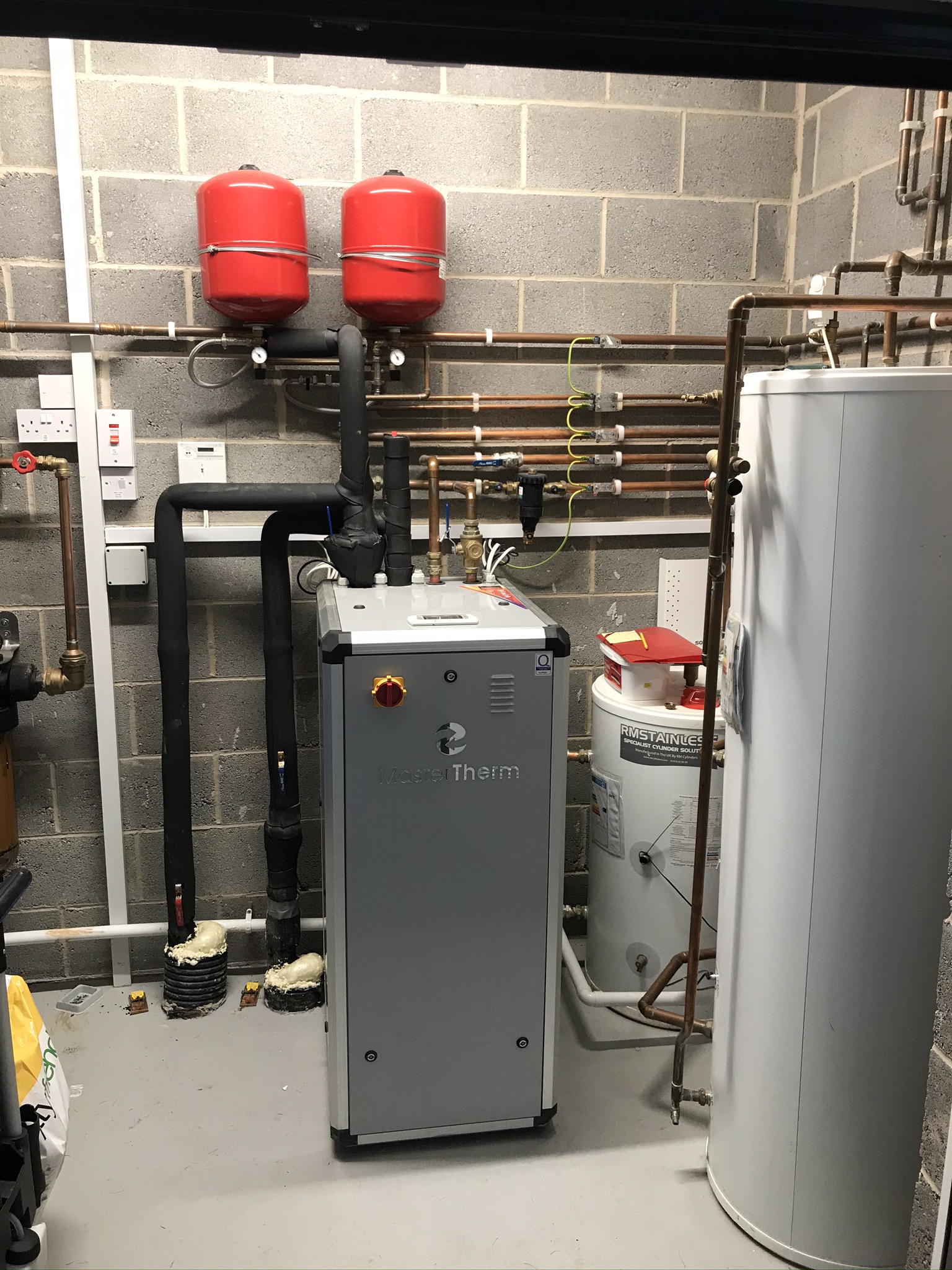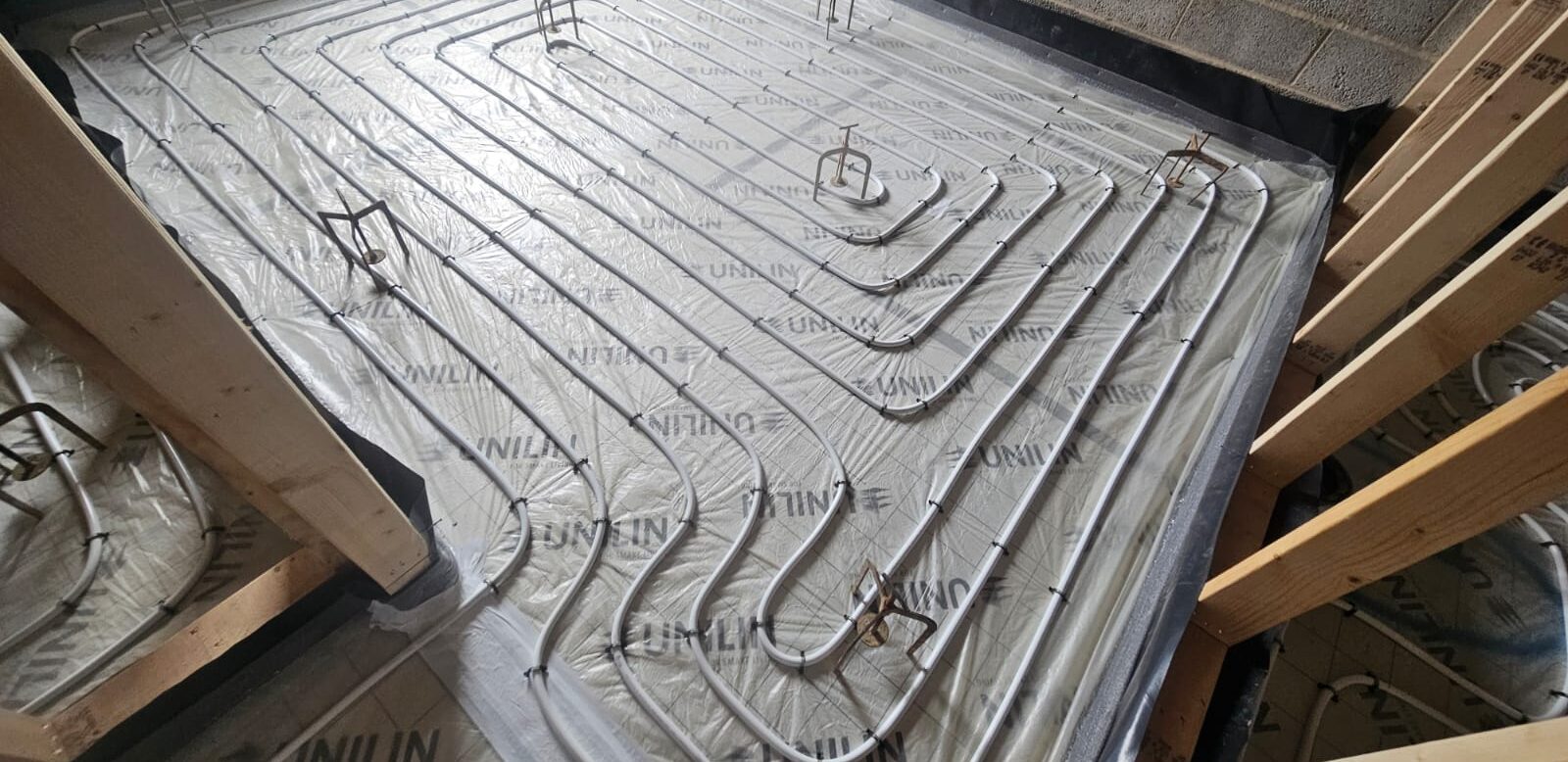Ground Source Heat Pumps

These systems are very efficient and should achieve overall efficiencies in excess of 450% – this is referred to as the Seasonal Coefficient of Performance or SCOP, and is usually described as a percentage or as a ratio e.g. 4.5:1.
This is important as the current price of a unit of electricity is around 4x the cost of a unit of Gas (but a boiler is never 100% efficient – 90% at best). GSHPs do not create any noise externally but will be similar to a boiler inside the building.
How does a Ground Source Heat Pump Work?
Ground Source Heat Pumps (GSHPs) operate by utilising the relatively stable temperature of the ground to provide heating, cooling, and hot water for residential and commercial applications while reducing energy consumption and carbon emissions.
These systems consist of a ground loop, typically buried underground or using bore-holes, and a heat pump unit installed indoors.
The ground loop contains a heat transfer fluid, usually a mixture of water and antifreeze, which absorbs heat from the ground in winter and dissipates heat into the ground in summer.
As the fluid circulates through the loop, it exchanges heat with the surrounding soil, which remains at a relatively constant temperature throughout the year.
The heat pump unit extracts heat from the fluid in winter and transfers it indoors for heating, while in summer, it removes heat from indoors and releases it into the ground for cooling.
GSHPs are highly efficient and environmentally friendly, offering significant energy savings and reducing greenhouse gas emissions compared to conventional heating and cooling systems.
Despite higher upfront costs, GSHPs provide long-term benefits through reduced energy bills and minimal environmental impact.
As the refrigerant absorbs heat, it vaporises and is compressed by a compressor, increasing its temperature and pressure. The hot, pressurised refrigerant then travels through a heat exchanger to transfer its heat to the water-based heating system.
In heating mode, the water absorbs the heat and circulates it through radiators, underfloor heating systems, or domestic hot water tanks, providing warmth throughout the building.
In cooling mode, the process is reversed, and excess heat from indoors is transferred to the ground outside.

